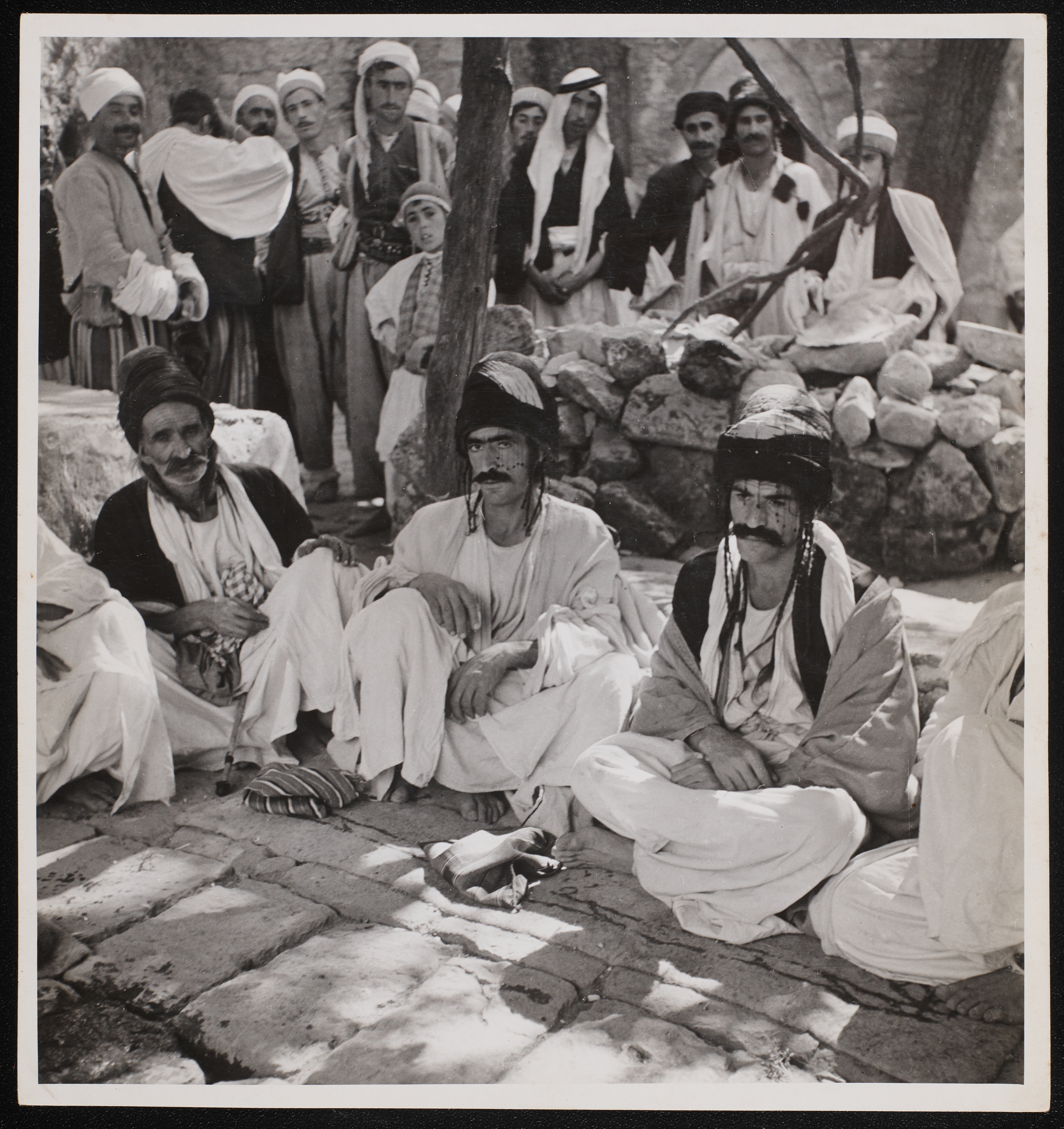Kurdistan in the 1940s.
Anthony Kersting
Courtauld Gallery
Exhibition Review
Published by Photomonitor
March 2022.

© The Anthony Kersting Archive, Conway Library, Courtauld Institute of Art.
Grandiose mausoleums, intricate monasteries and gracious mosques— the extensive documentation of religious buildings and the very people who inhabited, protected and revered them in The Middle-East’s Kurdistan, by South London-born British photographer Anthony Kersting, is as culturally significant as it is historically symbolic. That his documentation of Kurdistan (primarily the indigenous, ethnoreligious Yazidi community, as well as other Abrahamic religious minorities) is the focus of The Courtauld Gallery’s exhibition, Kurdistan in the 1940s, bears significance for a number of reasons: a light being shone onto a region defying borders, a rigidity of culture and of religion, while steeped in the ancient, the mythical and the syncretic. More importantly, however, Kersting’s images showcase a direct insight into a time before the persecution, turbulence and conflict that went on to displace and destroy on such colossal and irreversible scales, most recently by terror group ISIL, who eradicated many of the same buildings immortalised in his images. With this in mind, the reality that such prints and negatives would have otherwise remained unseen, consigned to boxes in Kersting’s home, and lost to time, is one that is hard to contemplate on any artistic or social level.
Kersting’s resulting exhibition, Kurdistan in the 1940s is a pure and poignant portal into the past— a precious window into the religious communities of Christians, Jews, Muslims and the indigenous Yazidis who made and continue to make Kurdistan what it is. That the images do not include the trappings of the modern age such as televisions, smartphones and even vehicles, makes it all the more nostalgic; a time in which connections to surroundings and collective identity were without the often impermeable distraction of the internet. The images exhibited, shot using FP4 Ilford film and spanning across twenty one oak frames, go beyond mere snapshots to tell visual stories of reverence, celebration and unity. Titled with elaborate annotations taken from the backs of each respective print, Kersting provides a diaristic insight into the lives of those who granted him access to them.

© The Anthony Kersting Archive, Conway Library, Courtauld Institute of Art.
With his background as an architectural photographer in mind, Kersting’s use of human subjects within the exhibited images exists as an ambitious divergence, making use of unconventional poses and compositions that play to his own strengths. An image of a Yazidi woman at Lalish for example, is as arresting as it is dynamic— slightly off-centre and underexposed, the backdrop of onlookers and the girl behind the protagonist, adding extra layers of authenticity, her pensive poise constantly giving, beyond mere looks. Something about its low vantage point and near diagonal framing, bridges it with Kersting’s approach to composing buildings for images, similarly also to others such as Yazidis at their annual festival at Lalish in Kurdistan. However in the case of the latter, slightly more visually complex, the chosen angle seems to amplify a tension; a terse neutrality between the subjects and the photographer, in which he seems neither welcomed nor rejected, he himself resigned to unfamiliarity and distance, literally and metaphorically.
By way of Kurdistan in the 1940s there is a sense of not only the importance of religion in the region but its direct links to legend, imagination and myth too— inescapable and fascinating. Amongst the images, a near three millennia-old sculpture of a Lamassu (a winged, mythical creature) stands guard at the gate to the Mesopotamian city of Nineveh, in a sepia-tinged print. In another, The Mosque of Nebi Yunis, presented in an image by Kersting as a modest, spired building atop a dune, purported to house not only the body of the biblical character Jonah but also the large fish that swallowed him. The leaning minaret of the Great Mosque of al-Nuri, or The Great Mosque in Mosul is one too: a detailed and delicately intricate obelisk-like building, the print itself showing the delicate nature of its original glass plate by way of speckled mould, with the structure’s slight tilting attributed to a bowing in the name of the prophet Muhammad as he ascended to heaven. With these particular buildings having been obliterated by ISIL in the last decade, one can’t help but feel a loss at the missing link between the palpable traditions, the protectors, and the pilgrims for whom these buildings were integral. Without realising it, Anthony Kersting was preserving these isolated, ancient ways of life beyond mere photojournalism, to something more akin to the importance of a historian, a point reiterated by Yazidi prince Tahseen Said, who after meeting the photographer in the 1940s, visited London shortly before his death in 2019, remarking on the importance of Kersting’s work to the future generations of his people.

© The Anthony Kersting Archive, Conway Library, Courtauld Institute of Art.
Still, beyond mourning priceless artefacts, buildings, traditions and ways of life lost within Kurdistan, the exhibition is a celebration of life, tradition and culture, all within a region built on a religious coexistence, that western eyes can not only experience and relate to on some level, but learn from too. Although now long gone, the people and places of worship that made Kurdistan the place it is today, give today’s audiences something that ultimately stands the test of time, inspires wonder and most importantly, educates sincerely— invaluable, the world over, for life with an ever-uncertain future.